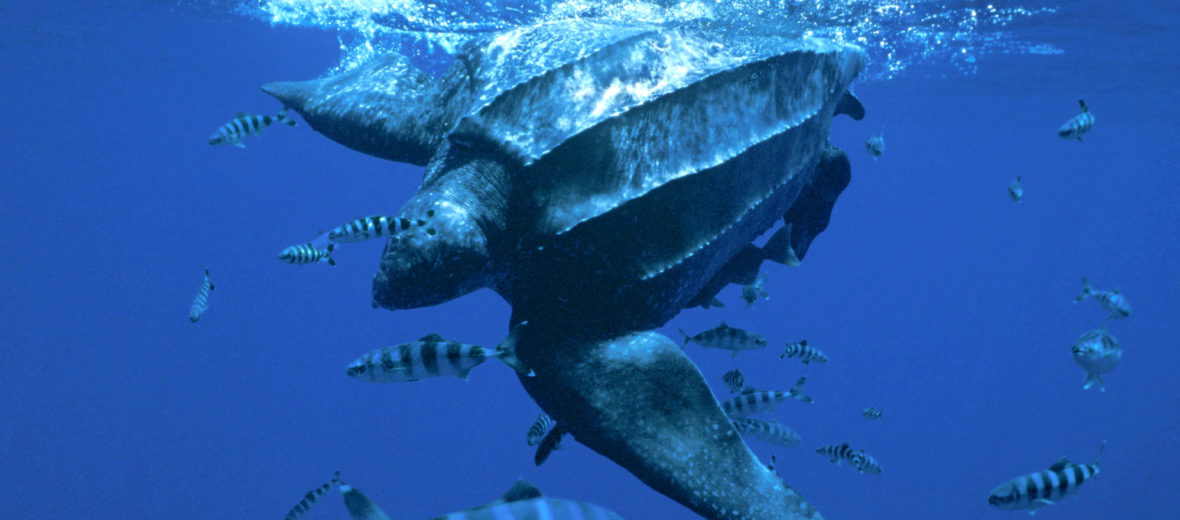
Having the largest range of any turtle, the leatherback turtle travels the Pacific, Atlantic, and Indian oceans in an incredible migratory journey. Leatherbacks are also known as the leathery turtle, the lute turtle, and the luth. They have an incredible migration that takes them up to 12,000 miles! Unlike other turtle species, the leatherback has a soft, leathery carapace. It is made up of cartilage. Unfortunately, due to pollution, these magnificent critters are subject to a slow and painful death at the hands of trash dumped into the oceans; mistaking plastic bags for jellyfish. They also face entanglement in fishing equipment (this is known as bycatch), ship strikes, poaching of eggs, global warming, and habitat loss due to commercial and other development. They are listed as Vulnerable by the IUCN.
First the Stats…
Scientific name: Dermochelys coriacea
Weight: Up to 1,500 lbs.
Length: Up to 7.2 feet
Lifespan: Up to 30 years
Now on to the Facts!
1.) These gentle giants are the 4th largest reptile on the planet. Saltwater crocodiles are number 1.
2.) Leatherback turtles have a specialized array of blood vessels called a countercurrent exchanger. This allows them to maintain a body temperature that’s higher than the surrounding water.
3.) They eat jellyfish, other gelatinous animals, and occasionally sea plants.
4.) Diving comes natural to these massive beasts. They have been recorded diving up to 4,000 feet deep!
5.) Predators include birds, snakes, crabs, and humans. That’s just on the beach. Then, when they make it to the water, they face large fish and sharks.
But wait, there’s more on the leatherback turtle!
6.) Females may return to the beach to lay their eggs but males never return to shore and spend their entire lives at sea.
7.) Every 2 – 3 years, the females travel to the place of their birth. They paddle their way ashore and make their way up the beach to dig a hole in the sand with which to lay her 100+ eggs.
Did you know…?
The leatherback turtle can go a whopping 85 minutes underwater, before needing to breathe.
8.) It is estimated that only 1 in 1,000 babies make it to adulthood.
9.) Higher egg incubation temperatures will yield more females and lower temperatures produce more males. An even temperature of around 85° F produces a relatively even clutch of males and females.
10.) Fossil records indicate that these majestic giants have been around for about 100 million years.
Now a Short Leatherback Turtle Video!
Also, check out the Critter Science YouTube channel. Videos added frequently!
Want to suggest a critter for me to write about? Let me know here.



